The top highest mountains of the world rise above 8k meters above sea level, which is over 26,000 feet, and according to Geology.com, seems like the competition is stiff as surprisingly, most of them belong to the Himalaya Ranges. The term “giant mountains” is often used to refer to the highest mountains in the world, such as the peaks in the Himalayas and the Andes. These mountains are often called giants because of their great height, steep slopes, and formidable challenges for climbers. The title of the highest mountain in the world deservedly goes to Mount Everest, which reaches an elevation of 29,029 feet (8,848 meters) at its summit. Other examples of giant mountains include K2, Kangchenjunga, Lhotse, Makalu, and Cho Oyu. These mountains are considered some of the most challenging and dangerous to climb, and many people have lost their lives attempting to reach their summits.
Here are the top ten highest mountains in the world, based on their elevation above sea level:
- Mount Everest: 29,029 feet (8,848 meters)
- K2: 28,251 feet (8,611 meters)
- Kangchenjunga: 28,169 feet (8,586 meters)
- Lhotse: 27,940 feet (8,516 meters)
- Makalu: 27,838 feet (8,485 meters)
- Cho Oyu: 26,864 feet (8,188 meters)
- Dhaulagiri: 26,795 feet (8,167 meters)
- Manaslu: 26,781 feet (8,163 meters)
- Nanga Parbat: 26,660 feet (8,126 meters)
- Annapurna: 26,545 feet (8,091 meters)
It is worth noting that the elevation of mountains can vary slightly depending on the source of the measurements and other factors. The list above is based on the most commonly cited elevations for these high mountain peaks.
How mountain heights are calculated
There are several methods for determining a mountain’s height, and some produce intriguing findings but what is the difference between the highest mountain and the tallest mountain? Sometimes these words are used inter changingly but the matter of the fact is that the “highest” mountain refers to one whose peak is furthest away from sea level while “tallest” means the peak of the said mountain is furthest away from the base of the mountain.
- Of course, Mount Everest, at 8848 meters, is the highest mountain above sea level.
- With nearly two-thirds of its height below sea level, Mauna Kea is the tallest peak from the bottom to the summit, standing at 10.203 meters.
- Chimborazo is the highest mountain peak, measured in relation to the center of the Earth.
- The final one requires some explanation since, at first, it seems nonsensical. How is a peak at 6267 meters taller than one at 8848? Due to the centrifugal forces produced by its revolution, Earth is not a perfect sphere; rather, it is a spheroid. Pole to pole, the equatorial diameter is 43 km (26 miles) long.
- The distance from the center of the Earth to the summit is 6.384.557 meters for Chimborazo and “only” 6.382.414 meters for Mount Everest since Chimborazo is significantly closer to the equator than Everest.
- The tallest peak that is “free-standing,” or not a member of a mountain range, comes next. That is Africa’s Kilimanjaro, which rises more than 4000 meters above the nearby plains at 5895 meters. By the way, Kilimanjaro is rated fourth in the world according to the “distance from the Earth’s center” statistic, whereas Everest is placed sixth.
1. Mount Everest the tallest mountain at 8,848 meters (29,029 feet)
Mount Everest is the highest mountain in the world, reaching an elevation of 29,029 feet (8,848 meters) at its summit. It is located in the Mahalangur mountain range in the Himalayas, on the border between Nepal and Tibet. Mount Everest is considered one of the most challenging and dangerous mountains to climb, and many people have lost their lives attempting to reach the summit. The first successful ascent of Mount Everest was made by Sir Edmund Hillary of New Zealand and Tenzing Norgay, a Sherpa of Nepal, on May 29, 1953. Since then, thousands of people have climbed Mount Everest, but the mountain continues to pose significant challenges and risks to those who attempt to conquer it.
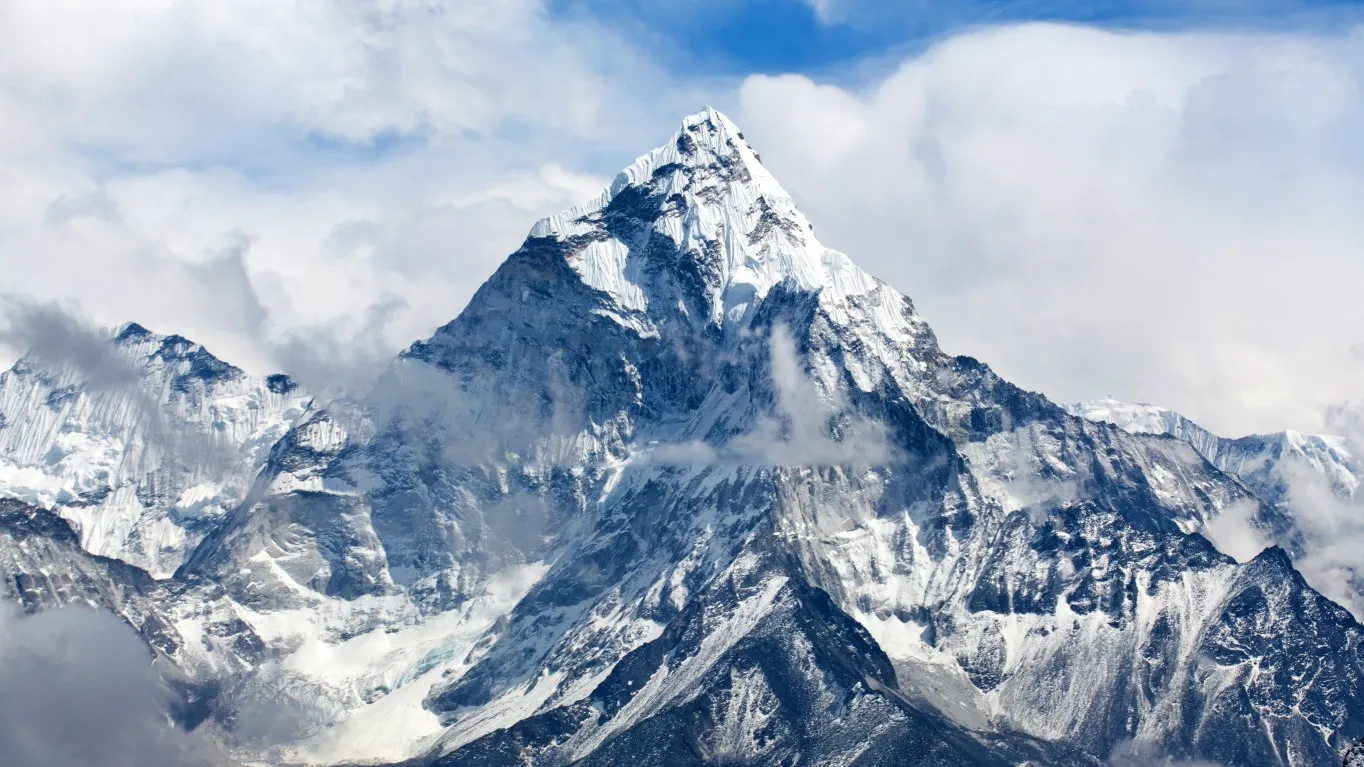 Elevation: 8,848m (29,029ft)
Elevation: 8,848m (29,029ft)
Location: Nepal / China
First ascent: 29th May 1953
Ascents: 9,159
Deaths: 295
Duration: 45-63 days
2. Mount K2 – Second tallest mountain in the world
K2 is the second-highest mountain in the world, reaching an elevation of 28,251 feet (8,611 meters) at its summit. It is located in the Karakoram range in the Himalayas, on the border between Pakistan and China. K2 is known as a particularly challenging and dangerous mountain to climb, and it has a much lower success rate compared to Mount Everest. Many people have lost their lives attempting to climb K2, and the mountain has earned the nickname “Savage Mountain” for its treacherous conditions. The first successful ascent of K2 was made by an Italian team on July 31, 1954. Since then, only a few hundred people have successfully climbed K2, and many more have been injured or died in the attempt.
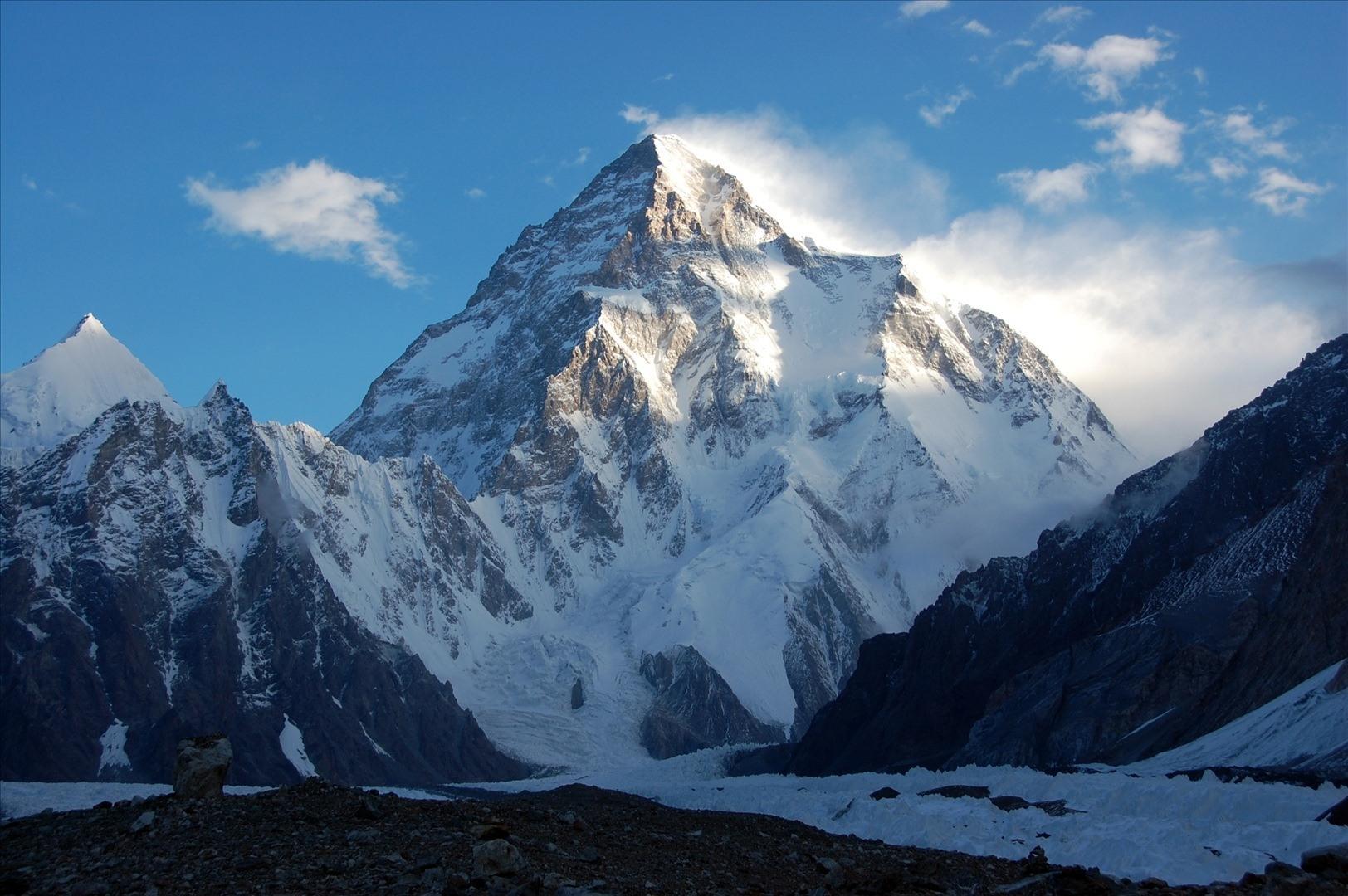 Elevation: 8,611m (28,251ft)
Elevation: 8,611m (28,251ft)
Location: Pakistan / China
First ascent: 31st July 1954
Ascents: 306
Deaths: 81
Duration: 68 days
3. Kangchenjunga – Third Highest Mountain
Kangchenjunga is the third-highest mountain in the world, reaching an elevation of 28,169 feet (8,586 meters) at its summit. It is located in the eastern Himalayas, on the border between Nepal and Sikkim, India. Kangchenjunga is considered one of the most challenging and dangerous mountains to climb, and many people have lost their lives attempting to reach the summit. The first successful ascent of Kangchenjunga was made by a British team on May 25, 1955. Since then, only a few hundred people have successfully climbed Kangchenjunga, and the mountain remains a formidable challenge for experienced climbers.
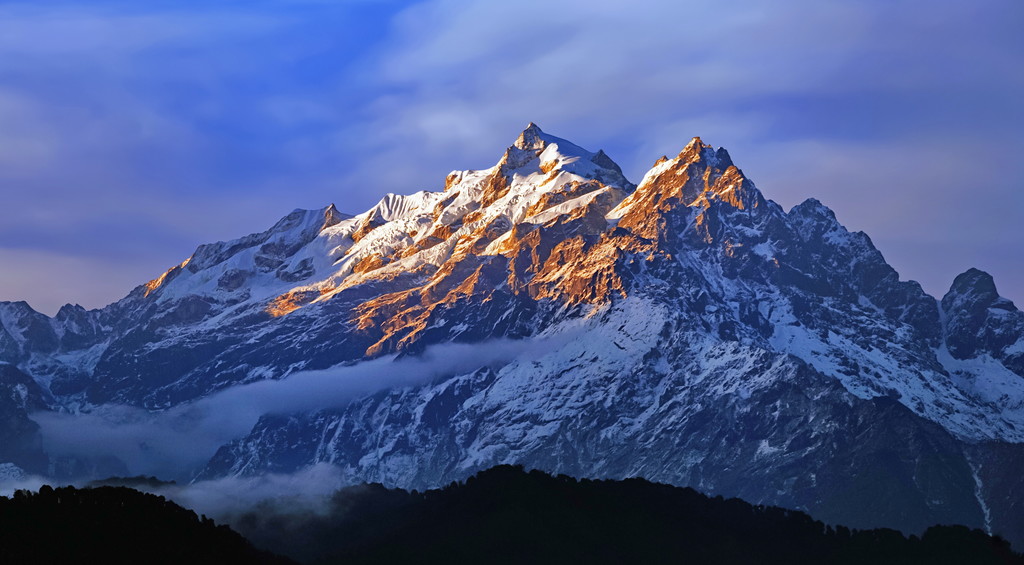 Elevation: 8,586m (28,169ft)
Elevation: 8,586m (28,169ft)
Location: Nepal / India
First ascent: 25th May 1955
Ascents: 491
Deaths: 58
Duration: 52 days
4. Lhotse – Fourth highest mountain
Lhotse is the fourth-highest mountain in the world, reaching an elevation of 27,940 feet (8,516 meters) at its summit. It is located in the Mahalangur mountain range in the Himalayas, on the border between Tibet and the Khumbu region of Nepal. Lhotse is often climbed as part of an expedition to Mount Everest, as it is connected to the latter mountain by the South Col. The first successful ascent of Lhotse was made by a Swiss team on May 18, 1956. Since then, many climbers have reached the summit of Lhotse, but the mountain continues to pose significant challenges and risks due to its high altitude and harsh weather conditions.
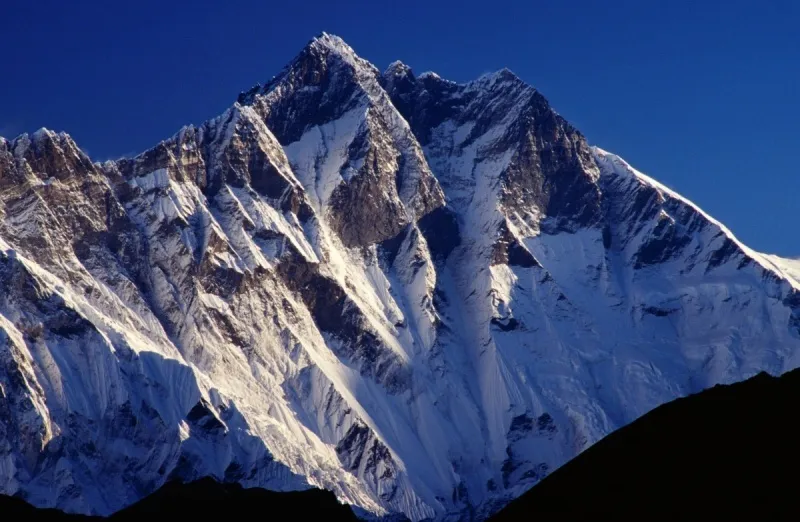 Elevation: 8,516m (27,940ft)
Elevation: 8,516m (27,940ft)
Location: Nepal / China
First ascent: 18th May 1956
Ascents: 813
Deaths: 30
Duration: 56 days
5. Makalu – Fifth Highest
Makalu is the fifth-highest mountain in the world, reaching an elevation of 27,838 feet (8,485 meters) at its summit. It is located in the Mahalangur range of the Himalayas, on the border between Nepal and Tibet. Makalu is known for its steep, sharp ridges and its challenging technical climbing routes, and it is considered one of the most difficult mountains to climb in the world. The first successful ascent of Makalu was made by a French team on May 15, 1955. Since then, many climbers have successfully reached the summit of Makalu, but the mountain continues to pose significant challenges and risks.
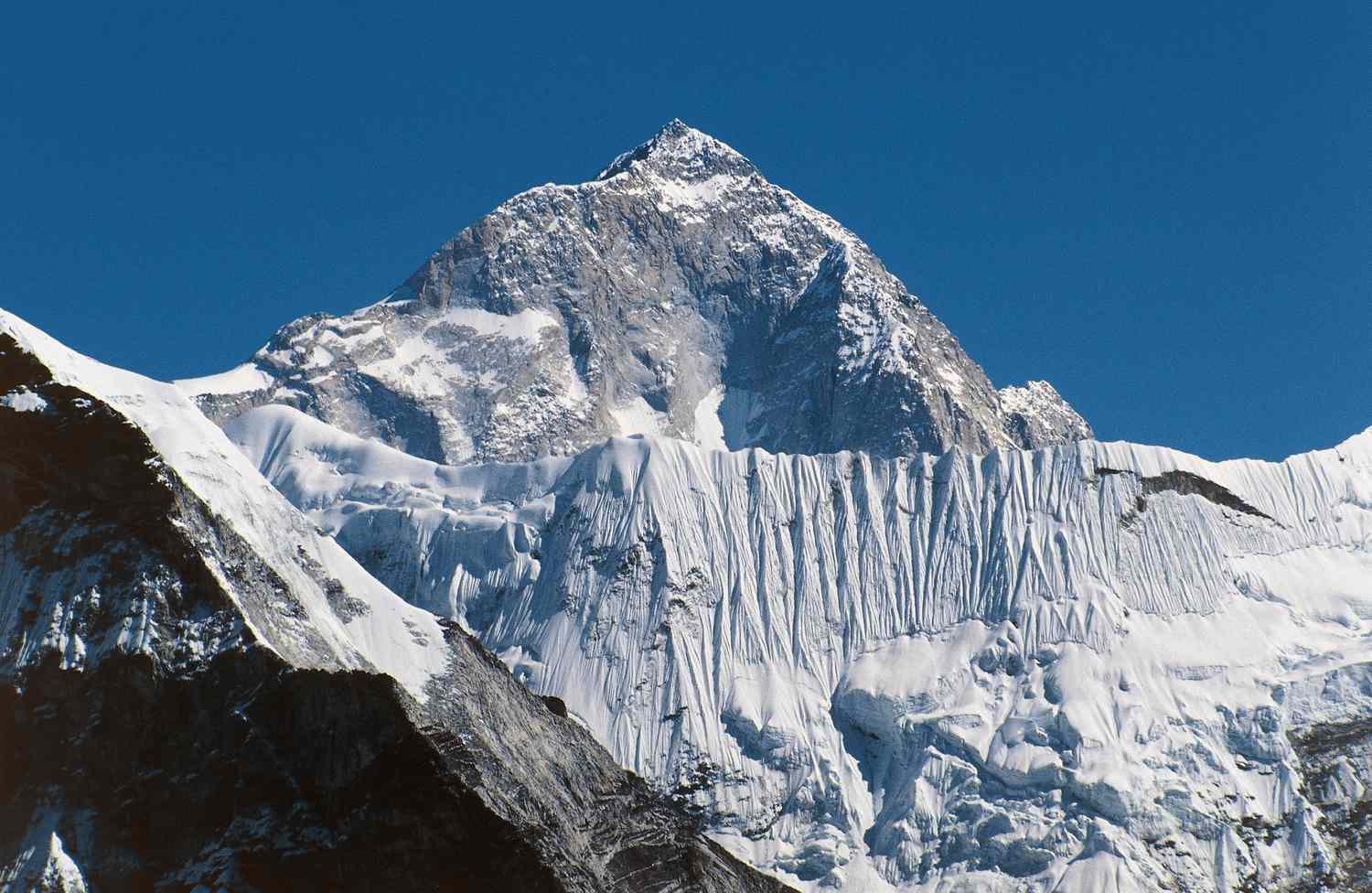 Elevation: 8,485m (27,838ft)
Elevation: 8,485m (27,838ft)
Location: Nepal / China
First ascent: 15th May 1955
Ascents: 486
Deaths: 45
Duration: 60 days
6. Cho Oyu – Sixth Highest
Cho Oyu is the sixth-highest mountain in the world, reaching an elevation of 26,864 feet (8,188 meters) at its summit. It is located in the Mahalangur range of the Himalayas, on the border between Tibet and Nepal. Cho Oyu is considered a somewhat easier mountain to climb compared to the other 8000-meter peaks in the Himalayas, but it still poses significant challenges and risks. The first successful ascent of Cho Oyu was made by a team of Austrians and Nepalese Sherpas on October 19, 1954. Since then, many climbers have successfully reached the summit of Cho Oyu, but the mountain remains a formidable challenge for experienced climbers.
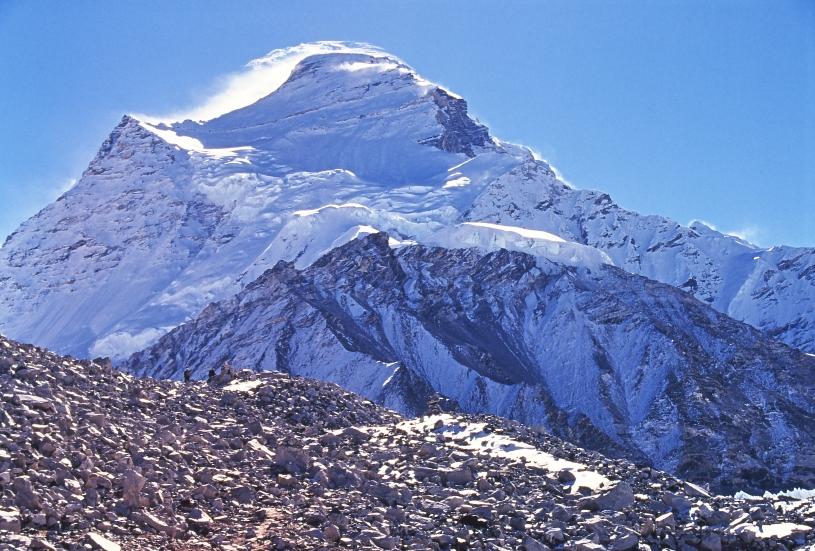 Elevation: 8,188m (26,864ft)
Elevation: 8,188m (26,864ft)
Location: Nepal / China
First ascent: 19th October 1954
Ascents: 3,732
Deaths: 51
Duration: 44 days
7. Dhaulagiri – Seventh Highest
Dhaulagiri is the seventh-highest mountain in the world, reaching an elevation of 26,795 feet (8,167 meters) at its summit. It is located in the Dhaulagiri range of the Himalayas in Nepal. Dhaulagiri is known for its steep slopes and its challenging technical climbing routes, and it is considered one of the most difficult mountains to climb in the world. The first successful ascent of Dhaulagiri was made by a Swiss/Austrian/Nepali team on May 13, 1960. Since then, many climbers have successfully reached the summit of Dhaulagiri, but the mountain continues to pose significant challenges and risks.
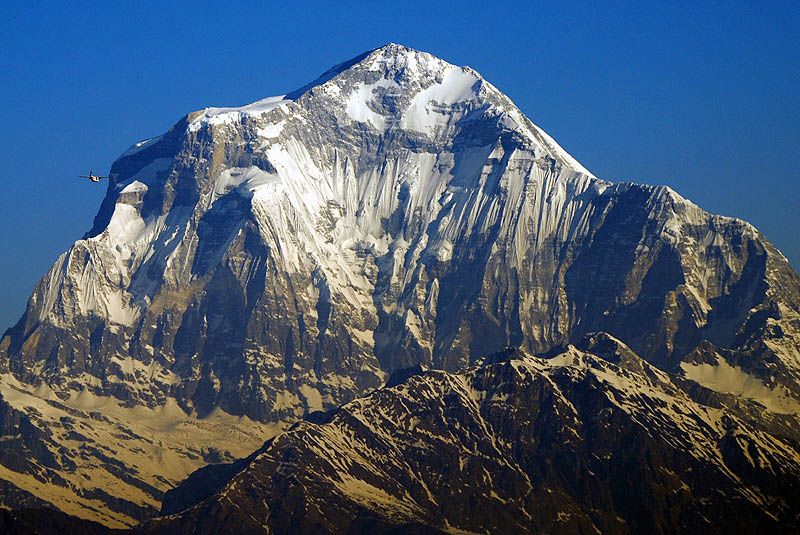 Elevation: 8,167m (26,795ft)
Elevation: 8,167m (26,795ft)
Location: Nepal
First ascent: 13th May 1960
Ascents: 544
Deaths: 84
Duration: 50 days
8. Manaslu – Eight Highest
Manaslu is the eighth-highest mountain in the world, reaching an elevation of 26,781 feet (8,163 meters) at its summit. It is located in the Mansiri Himal range of the Himalayas in Nepal. Manaslu is known for its steep, challenging faces and its unpredictable weather, and it is considered one of the most difficult mountains to climb in the world. The first successful ascent of Manaslu was made by a Japanese team on May 9, 1956. Since then, many climbers have successfully reached the summit of Manaslu, but the mountain continues to pose significant challenges and risks.
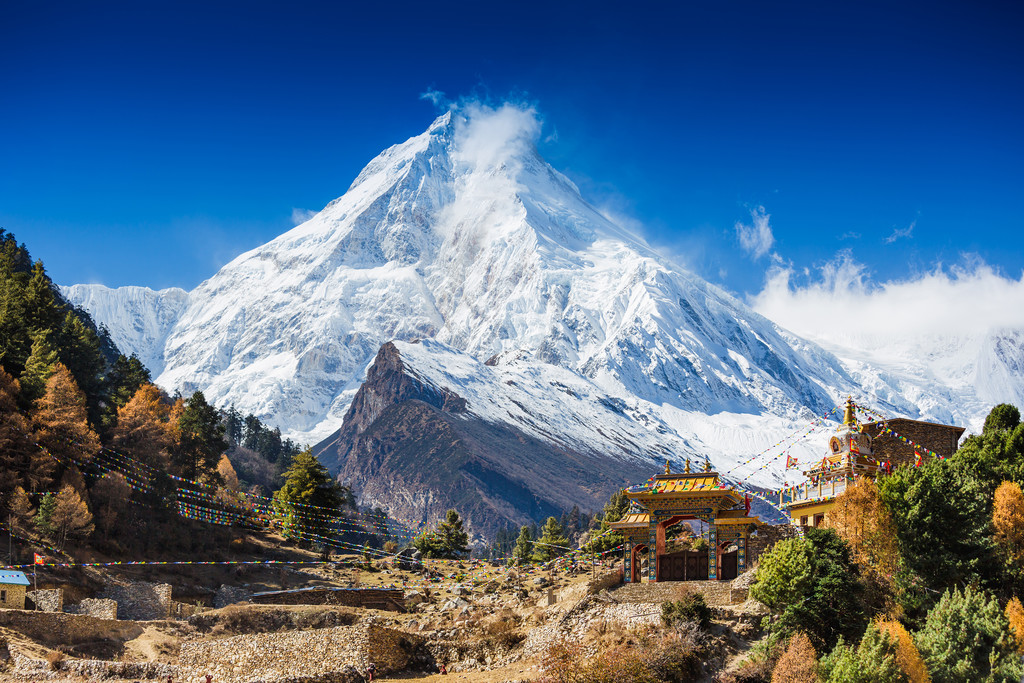
Elevation: 8,163m (26,781ft)
Location: Nepal
First ascent: 9th May 1956
Ascents: 1,464
Deaths: 83
Duration: 42 days
9. Nanga Parbat – Ninth -highest
Nanga Parbat is the ninth-highest mountain in the world, reaching an elevation of 26,660 feet (8,126 meters) at its summit. It is located in the western Himalayas in the Gilgit-Baltistan region of Pakistan. Nanga Parbat is known for its steep, rocky faces and its unpredictable weather, and it is considered one of the most difficult mountains to climb in the world. The first successful ascent of Nanga Parbat was made by an Austrian team on July 3, 1953. Since then, many climbers have successfully reached the summit of Nanga Parbat, but the mountain continues to pose significant challenges and risks.
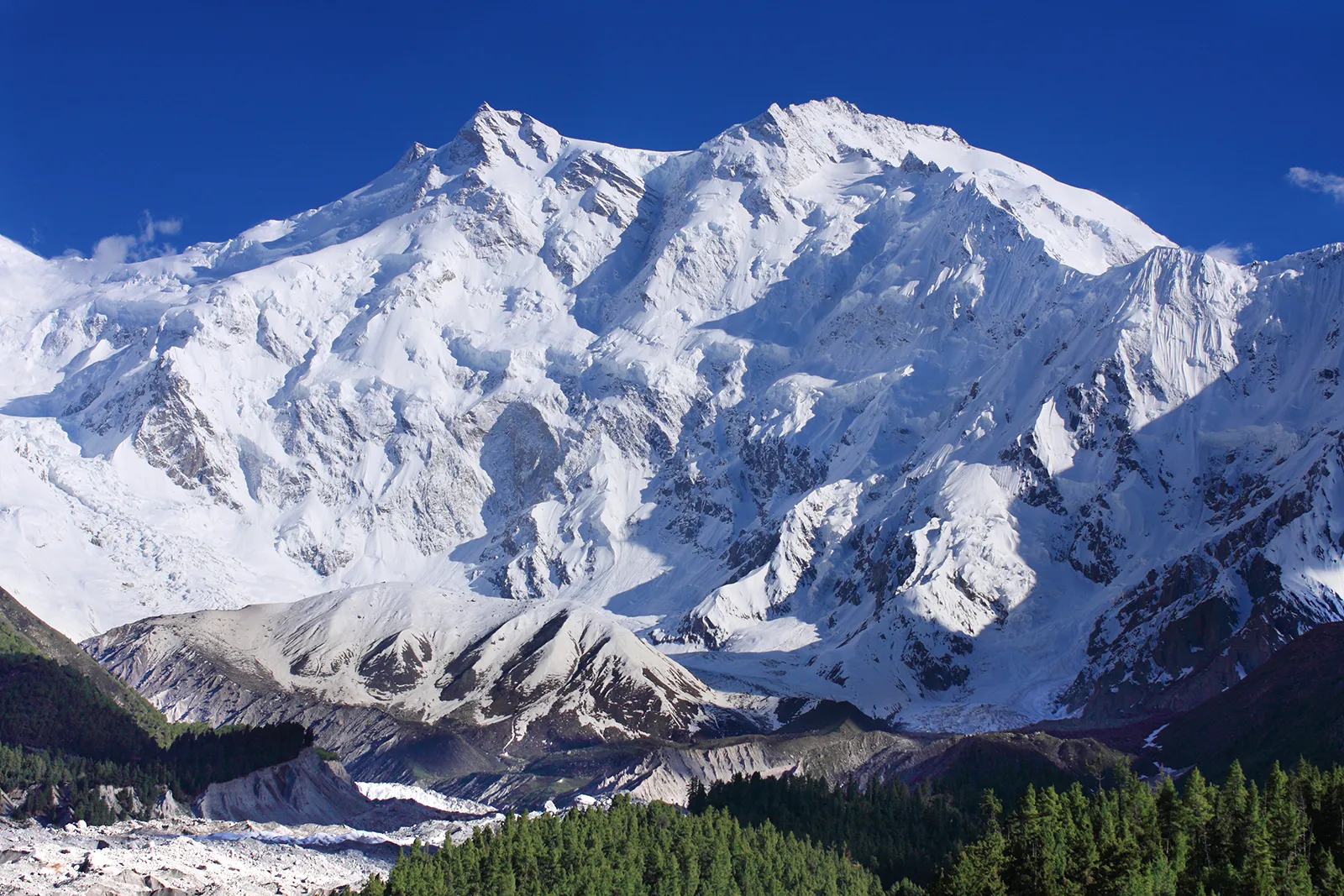 Elevation: 8,126m (26,660ft)
Elevation: 8,126m (26,660ft)
Location: Pakistan
First ascent: 3rd July 1953
Ascents: 335
Deaths: 68
Duration: 43 days
10. Annapurna – Tenth highest mountain in the world
Annapurna is the tenth-highest mountain in the world, reaching an elevation of 26,545 feet (8,091 meters) at its summit. It is located in the Annapurna range of the Himalayas in Nepal. Annapurna is known for its steep, rocky faces and its unpredictable weather, and it is considered one of the most difficult and dangerous mountains to climb in the world. The first successful ascent of Annapurna was made by a French team on June 3, 1950. Since then, many climbers have successfully reached the summit of Annapurna, but the mountain continues to pose significant challenges and risks. The fatality rate on Annapurna is one of the highest of any 8000-meter peak.
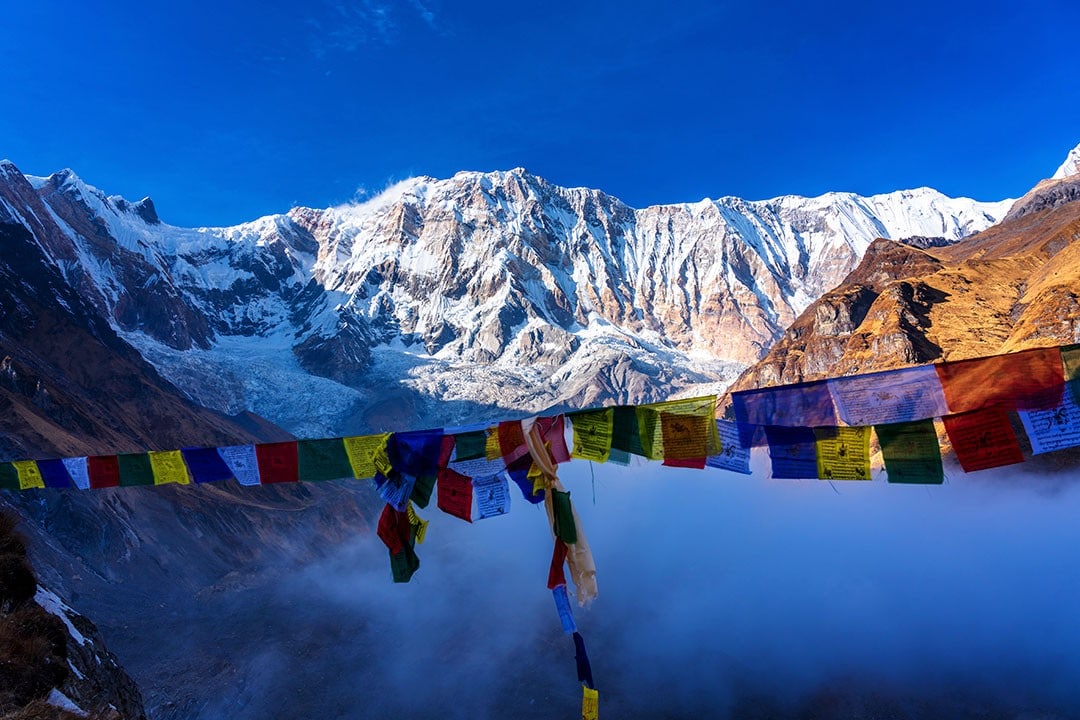 Elevation: 8,091m (26,545ft)
Elevation: 8,091m (26,545ft)
Location: Nepal
First ascent: 3rd June 1950
Ascents: 298
Deaths: 75
Duration: 54 days
What is the difference between the “highest” and “tallest” mountain in the world?
The terms “tallest” and “highest” are often used interchangeably when referring to mountains, but they actually refer to different things. “Tallest” refers to the distance from the base of a mountain to its summit, whereas “highest” refers to the elevation of a mountain above sea level at its summit.
For example, Mount Everest is the highest mountain in the world, reaching an elevation of 29,029 feet (8,848 meters) above sea level at its summit. This means that it is the highest point on the Earth’s surface, as measured from sea level. However, Mauna Kea is a taller mountain when measured from base to summit, reaching an elevation of over 33,000 feet (10,000 meters) when measured from its base on the ocean floor. This makes Mauna Kea the tallest mountain on Earth, but not the highest since much of the mountain is underwater.
In general, the term “highest” is used more commonly than “tallest” when referring to mountains, because it is a more precise and accurate way of measuring a mountain’s elevation. However, in some cases, the term “tallest” may be used to refer to the overall height of a mountain, including both its above- and below-water portions.
Mauna Kea, The tallest Mountain in the world
Mauna Kea is a dormant volcano on the island of Hawaii, and is the highest mountain in the world when measured from base to summit. It stands at an elevation of 13,803 feet (4,207 meters) above sea level at its summit, but when measured from its base on the ocean floor, it reaches an elevation of over 33,000 feet (10,000 meters), making it the tallest mountain in the world. However, because much of the mountain is underwater, it is not considered a free-standing mountain like Mount Kilimanjaro. Mauna Kea is also one of the most sacred places in Hawaiian culture, and it is home to many important cultural and natural resources.
See the top mountains in Tanzania to climb
Highest Freestanding Mountain in the world – Kilimanjaro
The highest free-standing mountain in the world is Mount Kilimanjaro, which reaches an elevation of 19,341 feet (5,895 meters) at its summit. A free-standing mountain is a mountain that is not part of a mountain range and stands alone. Mount Kilimanjaro is located in Tanzania, in eastern Africa. It is the highest mountain in Africa and the highest free-standing mountain in the world.
Mount Kilimanjaro and Mount Meru are the two highest mountains in Tanzania, while Kilimanjaro still holds the title as the highest peak in Africa, Mount Kenya comes second in the continent.
Read more about the mountains of East Africa
Chimborazo, Farthest mopuntain from the center of the earth
Chimborazo is a stratovolcano in Ecuador and is the highest mountain in the country. It stands at an elevation of 20,702 feet (6,310 meters) above sea level at its summit, making it the highest peak in Ecuador and the Andes mountain range. However, Chimborazo is not the tallest mountain in the world when measured from base to summit. Because the Earth is not a perfect sphere and bulges at the equator, Chimborazo’s summit is the farthest point on the Earth’s surface from the Earth’s center, making it the closest point to outer space of any location on Earth. This gives Chimborazo a slightly higher elevation than Mount Everest, which is the highest mountain in the world when measured from base to summit.
Highest altitude
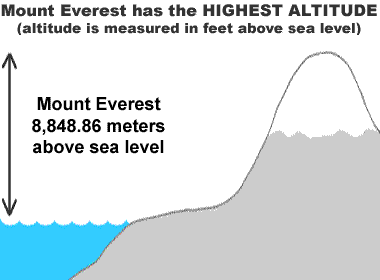 Mount Everest is the highest peak on Earth, rising 29,031.69 feet (8,848.86 meters) above sea level. The phrase “highest altitude” refers to the elevation above mean sea level.
Mount Everest is the highest peak on Earth, rising 29,031.69 feet (8,848.86 meters) above sea level. The phrase “highest altitude” refers to the elevation above mean sea level.
Numerous individuals attempt to conquer Everest every year. A little over 5000 people have achieved success—some even more than once. However, over 300 climbers have perished, which equates to a fatality rate of about 6%.
Tallest mountain
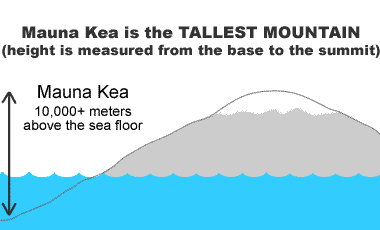 Approximately 6000 meters below sea level are the mountain’s base and 4000 meters are its top. The mountain’s foot and top are separated by around 10,000 meters. As a result, Mauna Kea is regarded as the world’s “tallest” mountain.
Approximately 6000 meters below sea level are the mountain’s base and 4000 meters are its top. The mountain’s foot and top are separated by around 10,000 meters. As a result, Mauna Kea is regarded as the world’s “tallest” mountain.
Highest above Earths Centre
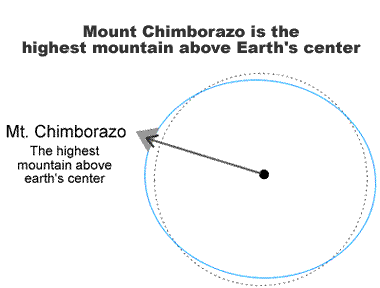 The Earth is not a perfectly round spherical in form. Instead, it is largest there, close to the equator. The perfect circle in the diagram above is represented by the gray dashed line, while the Earth’s form is depicted by the solid blue line (exaggerated a bit to make its departure from spherical obvious). Near the equator, where the diameter of the Earth is largest, is Chimborazo. As a result, Chimborazo’s top is the highest point above the planet’s core.
The Earth is not a perfectly round spherical in form. Instead, it is largest there, close to the equator. The perfect circle in the diagram above is represented by the gray dashed line, while the Earth’s form is depicted by the solid blue line (exaggerated a bit to make its departure from spherical obvious). Near the equator, where the diameter of the Earth is largest, is Chimborazo. As a result, Chimborazo’s top is the highest point above the planet’s core.
The 14 Highest Eight-thousanders Peaks in the world
The Eight-Thousanders are a group of 14 mountains that reach an elevation of at least 8,000 meters (26,247 feet) above sea level. These mountains are all located in the Himalayas and the Karakoram range of Asia. The 14 Eight-Thousanders are:
- Mount Everest: 8,848 meters (29,029 feet)
- K2: 8,611 meters (28,251 feet)
- Kangchenjunga: 8,586 meters (28,169 feet)
- Lhotse: 8,516 meters (27,940 feet)
- Makalu: 8,485 meters (27,838 feet)
- Cho Oyu: 8,188 meters (26,864 feet)
- Dhaulagiri: 8,167 meters (26,795 feet)
- Manaslu: 8,163 meters (26,781 feet)
- Nanga Parbat: 8,126 meters (26,660 feet)
- Annapurna: 8,091 meters (26,545 feet)
- Gasherbrum I: 8,073 meters (26,509 feet)
- Broad Peak: 8,047 meters (26,414 feet)
- Gasherbrum II: 8,035 meters (26,362 feet)
- Shishapangma: 8,027 meters (26,335 feet)
Climbing the Eight-Thousanders is considered one of the ultimate challenges for mountaineers, and many people have lost their lives attempting to reach the summits of these mountains. The first person to climb all 14 Eight-Thousanders was Reinhold Messner of Italy, who completed the feat on October 16, 1986. Since then, only a few dozen other climbers have successfully climbed all 14 peaks.
![]()

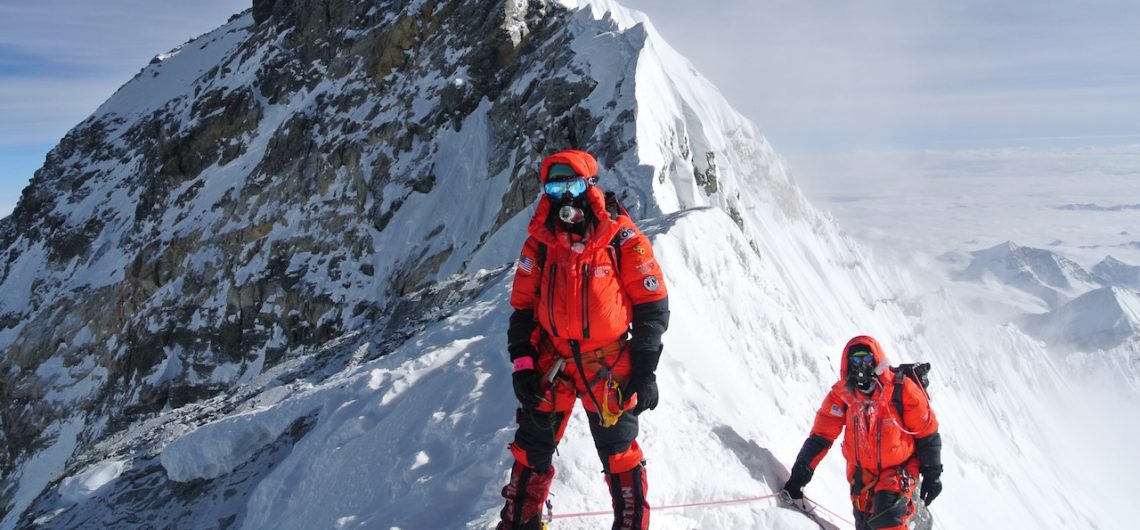
Comments